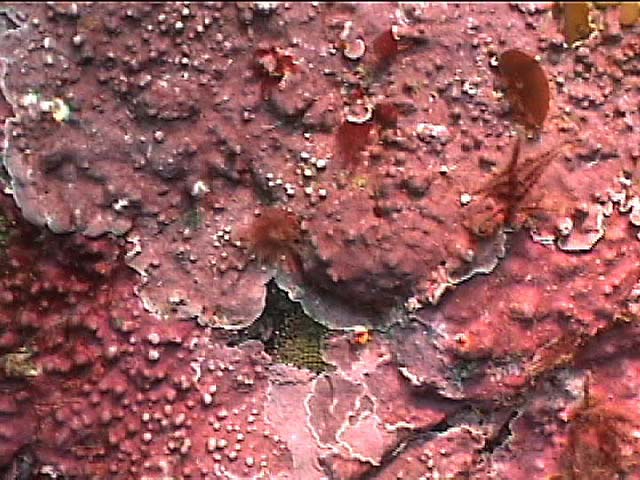Lithothamnion sp. is one of the most abundant of the red algaes at Race Rocks since it covers most of the rock surface in the subtidal zone. In the images below by Ryan Murphy this encrusting algae is the predominant substrate.
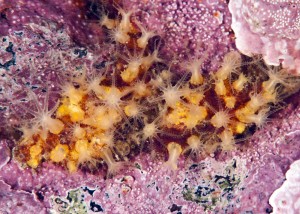 |
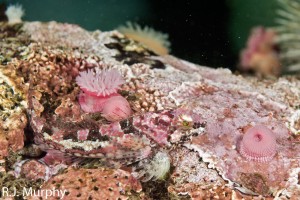 |
| A cluster of the hydroid Clavularia sp. | A sculpin exhibits cryptic colouration as it blends into the background |
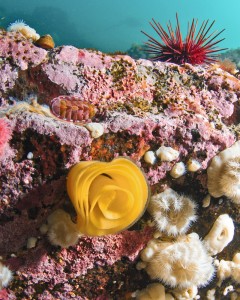 |
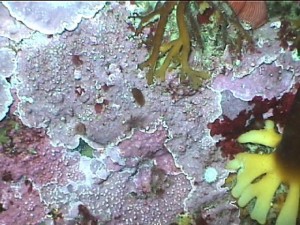 |
| Due to the high calcium carbonate content of it’s thamnion, it can only be grazed by molluscs such as this lined chiton with very hard rasping radulas above the ring of nudibranch eggs. | The holdfast of a kelp spreads over the Lithothamnion surface. |
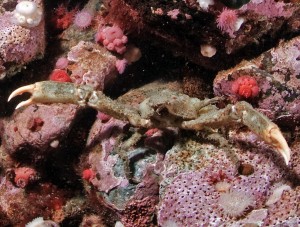 |
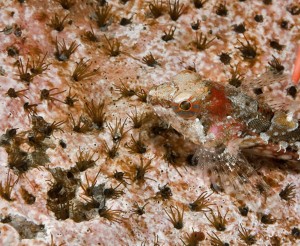 |
| A porcelain crab hovers over the surface of rocks covered in Lithothamnion | The small black tentacles of the annelid Dodecaceriia concharum: the coralline -fringed tube worm are dispersed evenly through the layer of Lithothamnion. |
Domain: Eukarya
Kingdom: Protoctista
Phylum: Rhodophyta
Class: Florideophyceae
Order: Cryptonemiales
Family: Corallinaceae
Genus: Lithothamnion
Species: sp.
Common Name: Pink encrusting coralline alg
The following video was done by Victor Rakou in the week of June1 2000. We have assembled here various segments of video to illustrate the community of organisms which live on and around Lithothamnion in the subtidal area at about 5 to 8 meters off the North side of Great Race Rocks, just out from the docks. In some areas large rock surfaces are completely covered with this encrusting red algae.. See also the blue waved chiton pictures where you can see photos of Lithothamnion lining the vertical sides of some of the lower level tidepools near peg 6. It also thrives in the tidepools east of the docks (peg 14b)
Lithothamnion sp.: Pink encrusting algae–The Race Rocks Taxonomy
Other Rhodophytes or Red Algae at Race Rocks
 The Race Rocks taxonomy is a collaborative venture originally started with the Biology and Environmental Systems students of Lester Pearson College UWC. It now also has contributions added by Faculty, Staff, Volunteers and Observers on the remote control webcams. Garry Fletcher, 2007 The Race Rocks taxonomy is a collaborative venture originally started with the Biology and Environmental Systems students of Lester Pearson College UWC. It now also has contributions added by Faculty, Staff, Volunteers and Observers on the remote control webcams. Garry Fletcher, 2007 |

